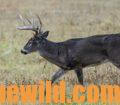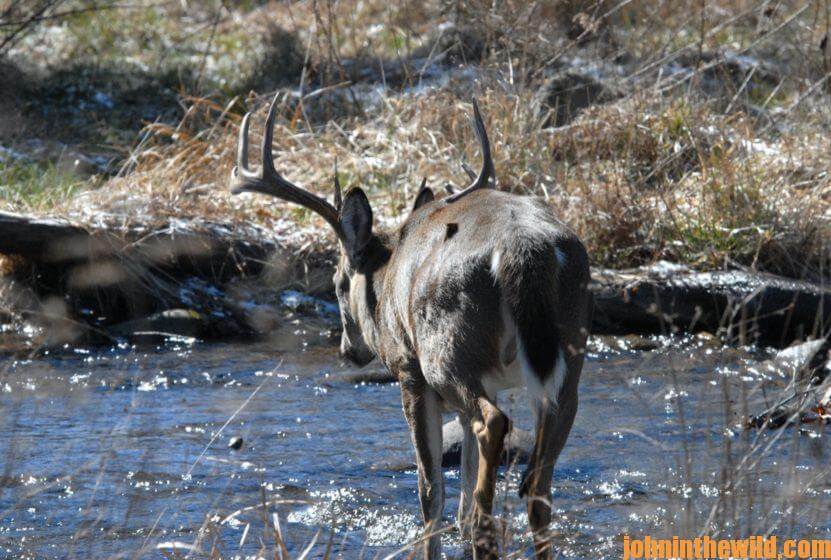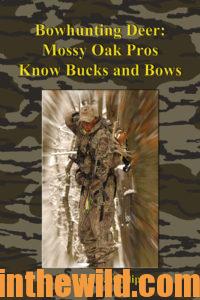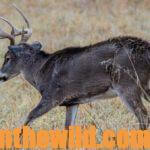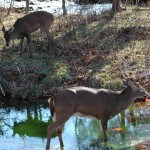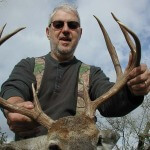Editor’s Note: Using a black magic marker and a gray work jumpsuit, Jim Crumley of Buchanan, Virginia, drastically changed the nature and purpose of camouflage when he created the first sportsman’s camouflage – Trebark. Crumley’s idea that vertical patterns best represented objects in the forest and created an illusion of a tree stump or the trunk of a tree brought into being a new term, “sportsman’s camouflage.” Crumley has been in love with bowhunting deer all his life.
 If you can drive to your tree stand and get relatively close to it, then a ladder stand and/or a permanent stand will provide you with a definite advantage for hunting deer. Generally when you use a permanent stand or a ladder-type stand and hunt from that stand several times a year, the deer soon will pattern you by smelling the trail you follow to go to and from the stand. However, by driving to ladder stands and permanent stands, you’ll leave less scent in the woods than if you carry a stand in or go back and forth to a hanging stand.
If you can drive to your tree stand and get relatively close to it, then a ladder stand and/or a permanent stand will provide you with a definite advantage for hunting deer. Generally when you use a permanent stand or a ladder-type stand and hunt from that stand several times a year, the deer soon will pattern you by smelling the trail you follow to go to and from the stand. However, by driving to ladder stands and permanent stands, you’ll leave less scent in the woods than if you carry a stand in or go back and forth to a hanging stand.
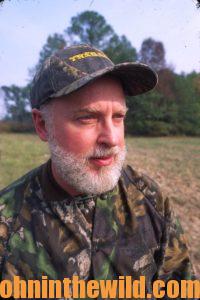 I believe permanent stands can be particularly effective when placed on the edges of agricultural fields that are planted each year and in bottlenecks or funnels to which you can drive up close. My rule of thumb on using permanent stands and ladder stands is if you can drive to them, they’re often better to hunt from than either hanging stands or climbing stands in certain places. But if you have to walk any distance to permanent or ladder stands, they’re often the least-productive stands you can utilize. Always be aware that the more human odor you put in the woods, the more you decrease your odds for bagging a buck. The less human odor in the woods, the more you increase your chances for taking a buck.
I believe permanent stands can be particularly effective when placed on the edges of agricultural fields that are planted each year and in bottlenecks or funnels to which you can drive up close. My rule of thumb on using permanent stands and ladder stands is if you can drive to them, they’re often better to hunt from than either hanging stands or climbing stands in certain places. But if you have to walk any distance to permanent or ladder stands, they’re often the least-productive stands you can utilize. Always be aware that the more human odor you put in the woods, the more you decrease your odds for bagging a buck. The less human odor in the woods, the more you increase your chances for taking a buck.
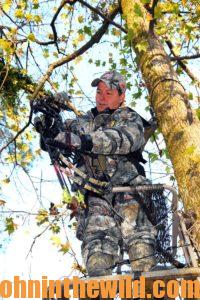 Ladder stands and permanent stands do have advantages for hunters who have difficulty climbing with either a climbing tree stand or a hanging tree stand. The permanent and/or ladder stands are helpful for older hunters and handicapped hunters, since they solve several problems. If you can drive near the stand, you can eliminate a long walk for an older hunter. Also climbing-up a ladder drastically reduces the chances of an older hunter or a handicapped hunter falling. As with all types of tree stands, wearing a safety harness is a must. When a hunter starts to climb into his tree stand, he should wear a safety belt.
Ladder stands and permanent stands do have advantages for hunters who have difficulty climbing with either a climbing tree stand or a hanging tree stand. The permanent and/or ladder stands are helpful for older hunters and handicapped hunters, since they solve several problems. If you can drive near the stand, you can eliminate a long walk for an older hunter. Also climbing-up a ladder drastically reduces the chances of an older hunter or a handicapped hunter falling. As with all types of tree stands, wearing a safety harness is a must. When a hunter starts to climb into his tree stand, he should wear a safety belt.

Deer Tactics for Permanent and Ladder Stands
When you use permanent stands and ladder stands, you set-up these types of stands in places deer use year after year. Deer are creatures of habit and often each year will:
- utilize the same funnel areas as long as nothing changes at the site of the funnel or on either end of the funnel;
- enter and leave an agricultural field at the same point, unless the field’s not planted, or until the crop’s harvested;
- cross a creek at the same point; and
- run the same scrape line.
Any place you find in the woods where deer show-up in the same region each year is a productive area to put either a ladder stand or a permanent stand – if you can drive to that stand. If you can’t drive to the stand, then each time you hunt it, you’ll decrease your odds for seeing deer. Deer won’t necessarily quit using that section of land but more than likely will frequent that place only at night.
I use a ladder stand for bowhunting when I’m hunting a clear-cut. Often when hunting a clear-cut, you’ll find young pines around the edges of the clear-cut that aren’t strong enough to support either a hanging stand or a climbing stand. However, you can lean a ladder stand up against those young pines without damaging them. Thick-cover hunting is where you’ll find older-age-class bucks, and clear-cuts are one of the best types of thick cover in which to locate these mature animals.
To learn more about hunting for deer, check out John E. Phillips’ bowhunting books, available in Kindle and print, “Bowhunting Deer: Mossy Oak Pros Know Bucks and Bows” (http://amzn.to/1QGvdQx) and “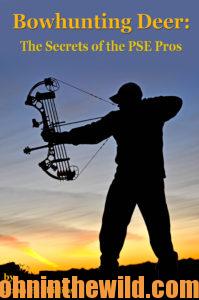 Bowhunting Deer: The Secrets of the PSE Pros” http://amzn.to/VBr1qW). You may have to copy and paste these links into your browser. (When you click on the books, notice on the left where Amazon says you can read 10% of the books for free). To see more of John’s deer-hunting books, check outwww.amazon.com/author/johnephillips.
Bowhunting Deer: The Secrets of the PSE Pros” http://amzn.to/VBr1qW). You may have to copy and paste these links into your browser. (When you click on the books, notice on the left where Amazon says you can read 10% of the books for free). To see more of John’s deer-hunting books, check outwww.amazon.com/author/johnephillips.
Tomorrow: Jim Crumley – Climbing Stands for Deer


